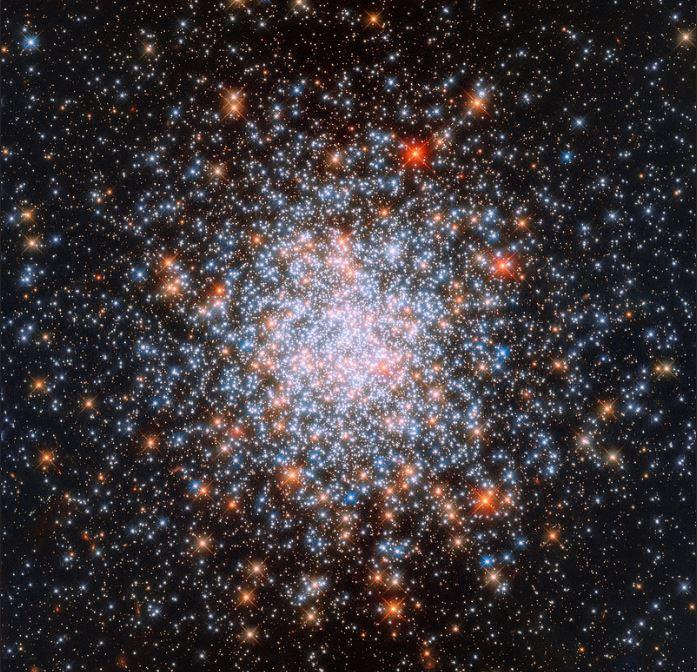Nasa measured all starlight in the universe EVER – and it’s astronomically high
One photon, two photons, three pho...we give up!

SPACE is absolutely enormous, but scientists say they've managed to measure all of the starlight ever produced in the observable universe.
This not only includes current starlight, but all starlight "produced throughout the history of the observable universe" – so it's quite a big number.
After all, our universe is estimated to be around 13.7billion years old, and began forming stars within a few hundred million years.
Science's best guess is that there are roughly two trillion galaxies and a trillion-trillion stars.
And now astrophysicists at Clemons College of Science have used data from Nasa's Fermi Gamma-ray Space Telescope to work out how many photons (particles of light) have ever been produced by stars.
Technically, the number is known as septenvigintillion – but that's not massively useful.
In fact it's 4 multiplied by 10 to the power of 84.
With each power, you multiply the number by 10 again. So 10 to the power of 2 is 100, and 10 to the power of 3 is 1,000, and so on.
In this case, you end up with a number that has 84 zeroes – also know as this: 4,000,000,000,000,000,000,000,000,000,000,000,000,000,000,000,000,000,000,000,000,000,000,000,000,000,000,000,000.
Yes, that's how many photons make up all the starlight ever produced in the observable universe, according to scientists writing in the journal Science.
For contrast, it's estimated that the number of grains of sand on Earth totals around 7.5 x 10 the power of 18 – or 7,500,000,000,000,000,000.
And the amount of water molecules on Earth is estimated at 4.6 x 10 to the power of 43 – or 46,000,000,000,000,000,000,000,000,000,000,000,000,000,000 molecules.
Basically, there's a whole lot of light out there.
"From data collected by the Fermi telescope, we were able to measure the entire amount of starlight ever emitted," said Clemson's Marco Ajello.
"This has never been done before."
He continued: "Most of this light is emitted by stars that live in galaxies.
"And so, this has allowed us to better understand the stellar-evolution process and gain captivating insights into how the universe produced its luminous content."
Of course, this isn't actually all of the light out there – there's loads of light that simply won't reach the Earth.
This is a measurement of the observable universe, which (as the name suggests) is the bit we can see.
How was the measurement made?
Here's what you need to know...
- Light can be measured in terms of photons, the smallest possible unit of light
- We have extensive data on light in the universe thanks telescopes on Earth and in space
- In space, there is a phenomenon known as extragalactic background light (EBL)
- This is a "cosmic fog" made up of all of the light emitted by stars, or from dust in their vicinity
- Until recently, it's been impossible to do more than guess at the thickness of this fog – and therefore work out the amount of light
- So scientists used blazars, which are galaxies containing supermassive black holes that release narrow jets of particles that move across the cosmos very quickly
- When one of these jets is pointed directly at Earth, gamma ray photons produced inside the jets collide with the cosmic fog – leaving an imprint
- This allowed researchers to measure how dense the cosmic fog is at a given place
- But by using jets from blazars at different distances away (which take different amounts of time to travel), researchers could also measure how dense the cosmic fog was at a given time in history
- "Gamma-ray photons traveling through a fog of starlight have a large probability of being absorbed," said Marco Ajello, a professor involved in the study
- "By measuring how many photons have been absorbed, we were able to measure how thick the fog was and also measure, as a function of time, how much light there was in the entire range of wavelengths"
- This made it possible to measure light that we can't see – but that we know must be there
- This can then be combined with the light we can see, giving us a fairly accurate estimation of the amount of starlight in the universe
Lots of light is blocked on its way to Earth. And some light, from the very beginning of the universe, still hasn't made its way to Earth yet.
In fact, a large chunk of the light measured here comes from our own sun and galaxy.
MOST READ IN SCIENCE
The rest of the starlight that reaches Earth is "exceedingly dim", according to experts.
It's equivalent to looking at a 60-watt lightbulb in complete darkness, from a distance of about 2.5 miles.
This is mainly because the universe is unbelievably large. It also explains why the sky is dark at night – other than light from the moon and some stars.
Do you think we'll ever explore the entire universe? Let us know in the comments!
We pay for your stories! Do you have a story for The Sun Online news team? Email us at tips@the-sun.co.uk or call 0207 782 4368 . We pay for videos too. Click here to upload yours.













